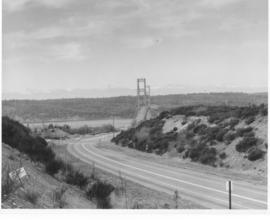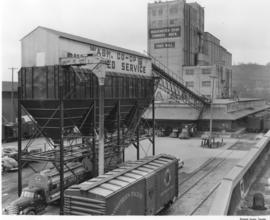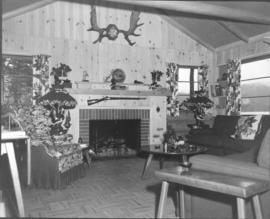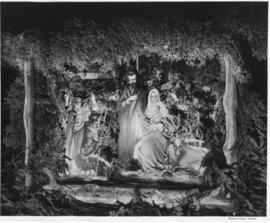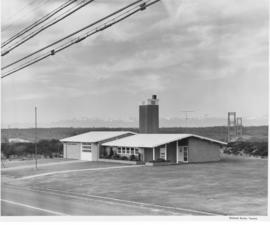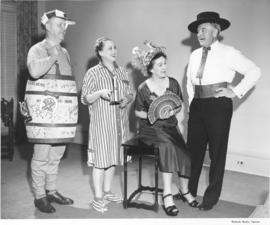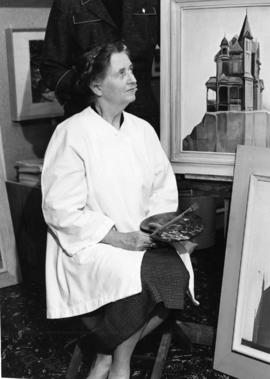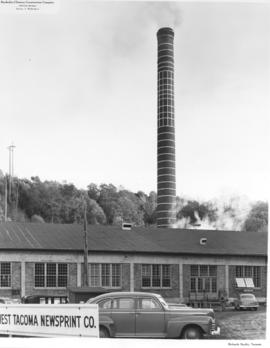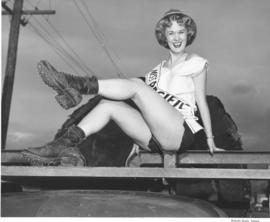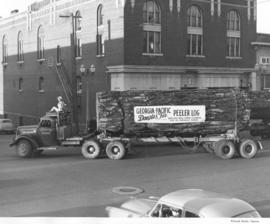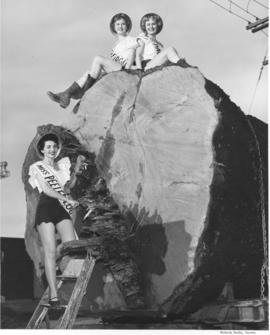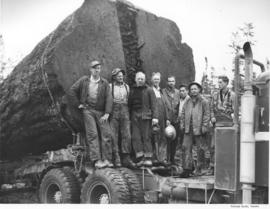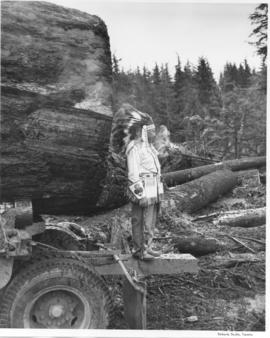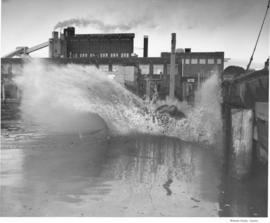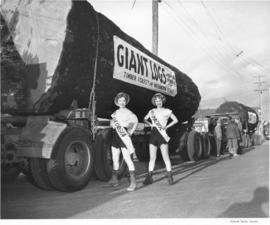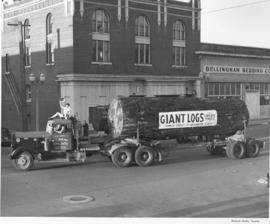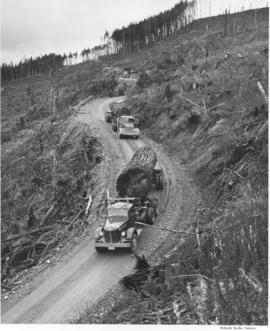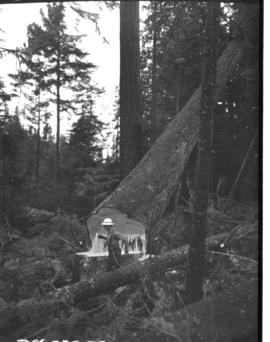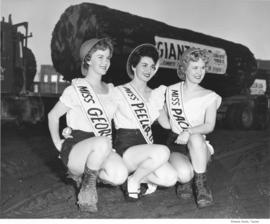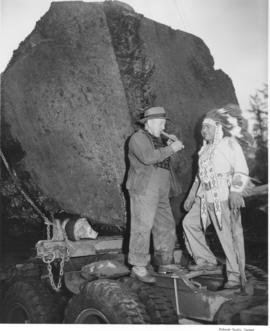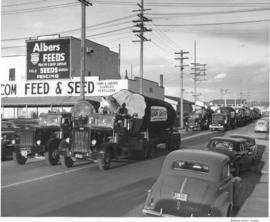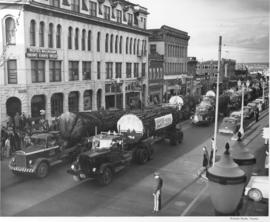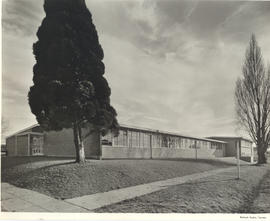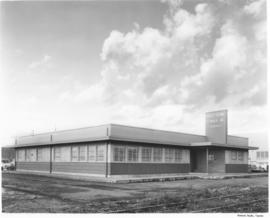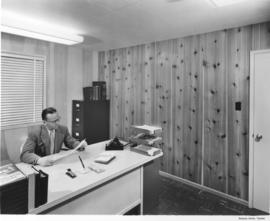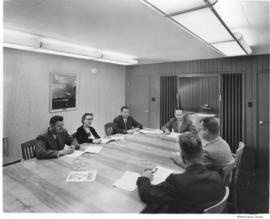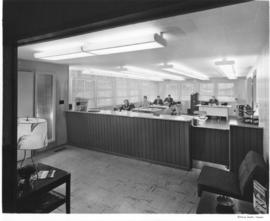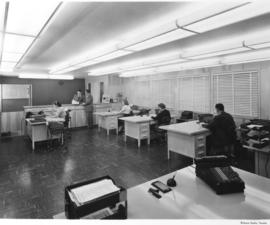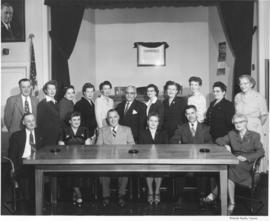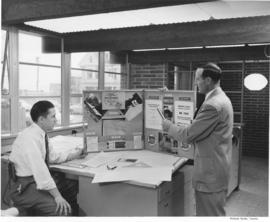Executives of Puget Sound Plywood, Inc., manufacturers of plywood, confer in the board room on November 23, 1954. The five executives all have documents in front of them and may be discussing an ad campaign as there is a copy of a cartoon introducing new usage for plywood. Harold Wenman (at right, in light coat) is apparently addressing his fellow workers. Mr. Wenman was an original shareholder of Puget Sound Plywood. The firm, the first cooperative plywood plant in Tacoma, opened on June 1, 1942. It had 298 members who each contributed $1000 and received the same hourly pay and percentage of the company's profits. Mr. Wenman had purchased his share before WWII and worked as the Office Manager for many years before becoming the General Manager from 1964-1970. A graduate of Knapps School of Business, he worked as an accountant for St. Regis, and then served as a staff sgt.in England during the war. Puget Sound Plywood continued to operate through the early 1980s but finally closed due to economic conditions. Photograph ordered by Douglas Fir Plywood Assn. (Additional information provided by a reader)
Puget Sound Plywood, Inc. (Tacoma); Wenman, Harold; Lumber industry--Tacoma--1950-1960; Plywood; Cooperatives--Tacoma; Office workers--Tacoma--1950-1960; Desks; Douglas Fir Plywood Association (Tacoma);
